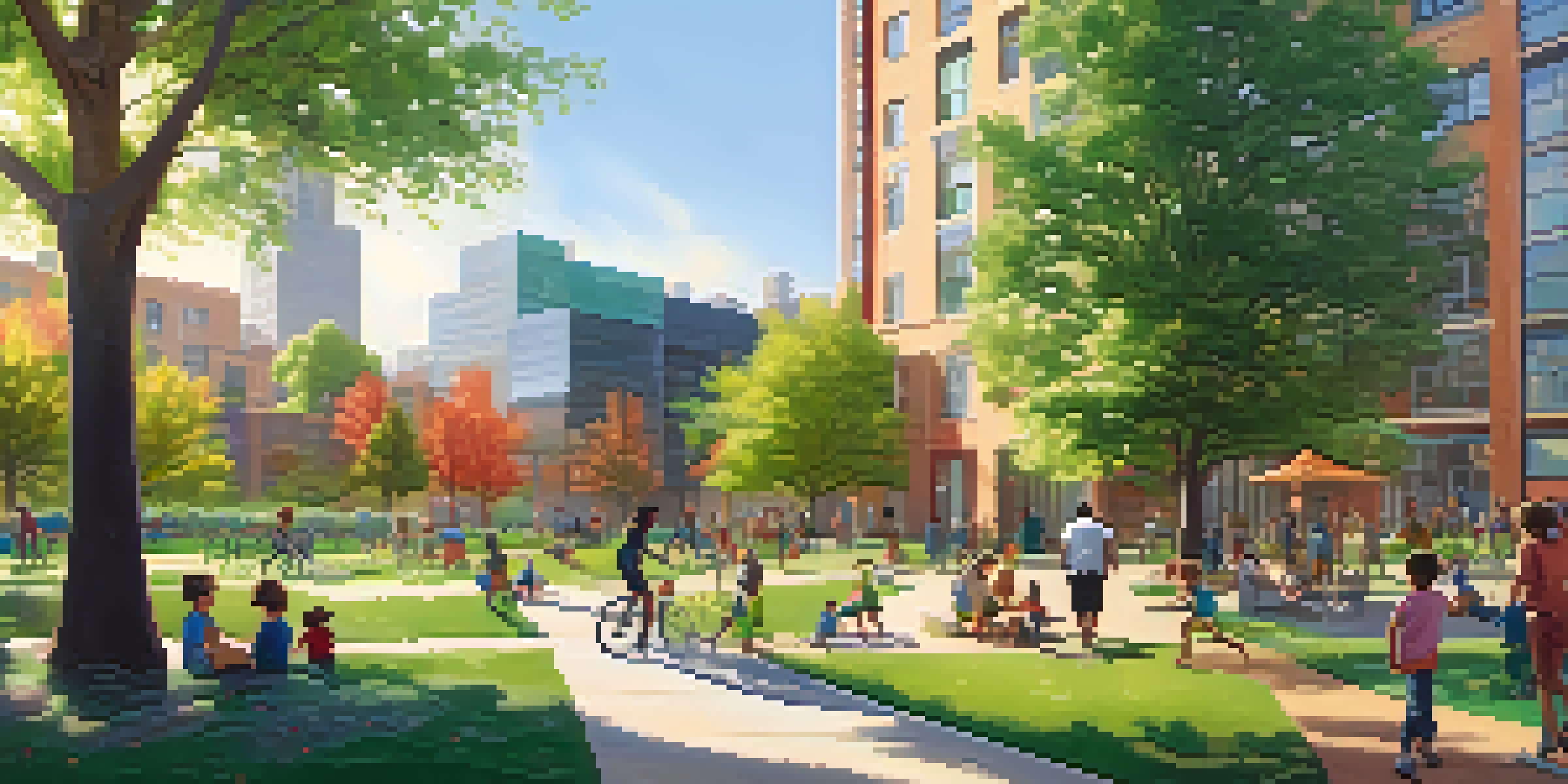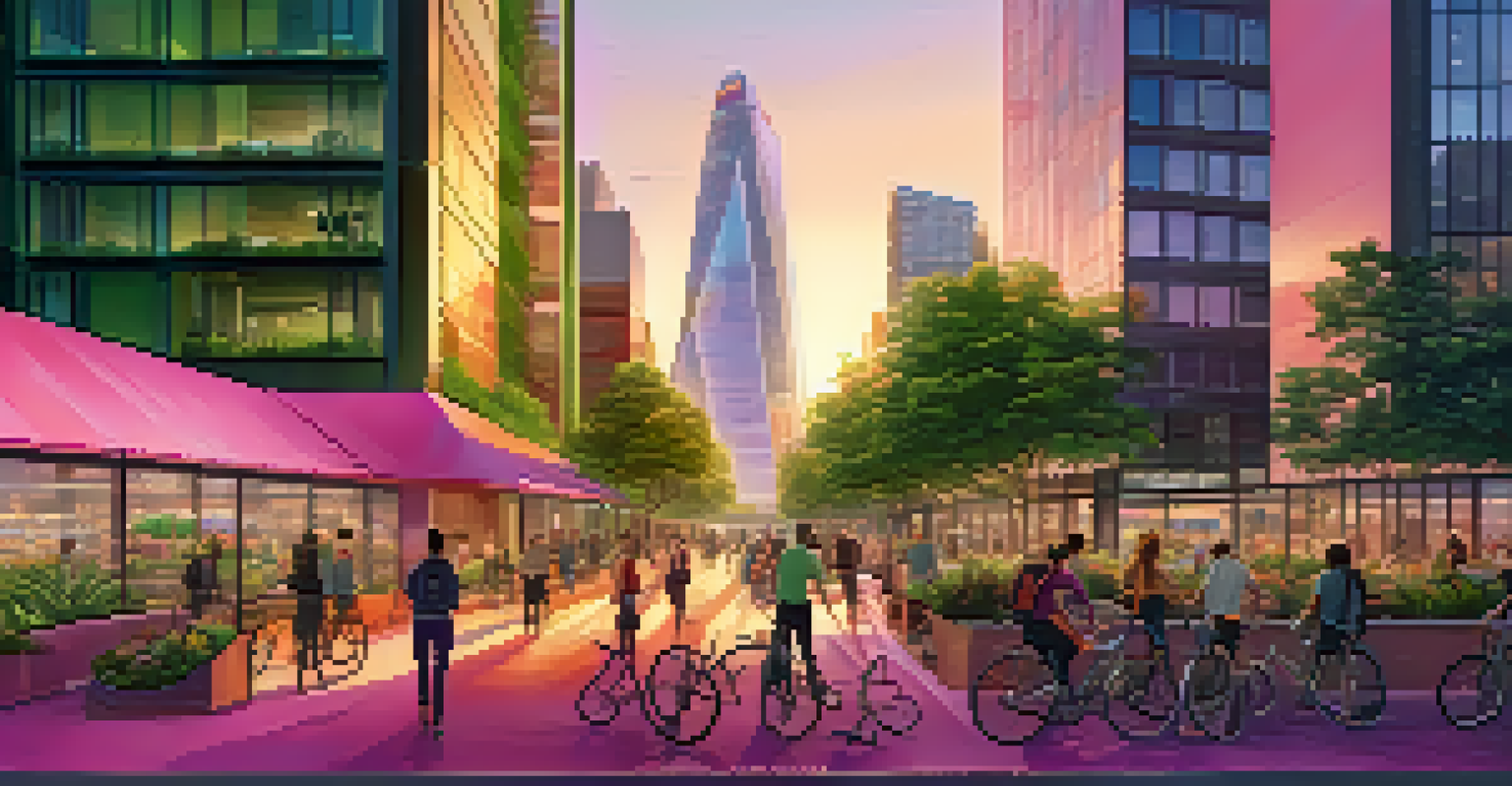Zoning Regulations and Their Impact on Green Buildings

Understanding Zoning Regulations in Urban Planning
Zoning regulations are rules that dictate how land can be used in specific areas. They help maintain order in a community by separating residential, commercial, and industrial zones. For instance, in a residential zone, you won't find a factory next door, which is crucial for quality of life.
Sustainability is no longer about doing less harm. It's about doing more good.
These regulations also dictate the types of buildings allowed, their height, and even their architectural style. Such guidelines ensure that new developments harmonize with the existing neighborhood character. This is especially important in areas where historical preservation is a priority.
However, it's essential to note that these regulations are not static; they evolve with changing community needs and environmental considerations. This adaptability can either hinder or help the development of green buildings, depending on how local governments approach sustainability.
The Connection Between Zoning and Green Building Practices
Zoning laws can significantly influence the implementation of green building practices. For instance, certain regulations may encourage mixed-use developments, which can reduce reliance on cars and promote public transport. This not only lowers carbon emissions but also fosters a sense of community.

Additionally, zoning can dictate the inclusion of green spaces, like parks or community gardens, which are vital for urban ecosystems. These areas not only provide recreational opportunities but also improve air quality and support local wildlife.
Zoning Shapes Urban Development
Zoning regulations dictate land use, influencing the character and quality of life in communities.
However, outdated zoning laws can obstruct innovative green building designs. Communities must advocate for changes that allow the integration of sustainable practices, such as solar panels and green roofs, into their zoning codes.
Case Studies: Cities Leading the Way in Green Zoning
Cities like Portland and San Francisco have adopted zoning regulations that prioritize sustainability. In Portland, for example, zoning codes encourage the development of eco-friendly buildings and renewable energy sources. This proactive approach has made the city a model for sustainable urban planning.
The greatest threat to our planet is the belief that someone else will save it.
San Francisco has implemented zoning laws that require new developments to meet specific green building standards, such as LEED certification. These regulations not only enhance the environment but also increase property values, proving that sustainability can be economically beneficial.
These successful examples illustrate how forward-thinking zoning regulations can facilitate the growth of green buildings. By learning from these cities, others can adopt similar strategies to promote sustainability in their own communities.
Challenges Faced in Implementing Green Zoning Policies
Despite the benefits, implementing green zoning policies is not without challenges. Resistance from developers who fear increased costs can stall progress. Many see green building practices as an added expense rather than an investment in the future.
Community pushback can also hinder the adoption of sustainable zoning laws. Some residents may be concerned about changes in their neighborhoods, fearing it could alter their quality of life. Addressing these concerns through education and open dialogue is crucial for success.
Green Building Needs Supportive Zoning
Effective zoning can promote sustainable practices, such as mixed-use developments and green spaces.
Additionally, there can be confusion surrounding the regulations themselves. Clear communication and streamlined processes are essential to ensure that all stakeholders understand the benefits and requirements of green zoning.
The Role of Local Governments in Green Building Initiatives
Local governments play a pivotal role in shaping zoning regulations that support green buildings. They can create incentives for developers to incorporate sustainable practices, such as tax breaks or expedited permitting processes. By doing so, they can encourage more eco-friendly construction projects.
Moreover, local governments can lead by example by adopting green practices in their own buildings. When public buildings showcase sustainable features, they set a precedent and inspire private developers to follow suit.
Engaging the community in these initiatives is equally important. Local governments can organize workshops and forums to educate residents about the benefits of green zoning, fostering a supportive environment for sustainable development.
The Future of Zoning Regulations and Green Building
As the world increasingly focuses on sustainability, the future of zoning regulations is likely to change. Cities are beginning to recognize the importance of integrating green building practices into their planning processes. This shift is essential for addressing climate change and creating healthier urban environments.
Emerging technologies and innovative building practices will also play a significant role in shaping future zoning regulations. For instance, the rise of smart cities could lead to more flexible zoning codes that adapt to real-time data and community needs.
Local Governments Drive Change
Local governments play a crucial role in fostering green building initiatives through incentives and community engagement.
Ultimately, the future of zoning regulations will depend on collaboration among stakeholders—governments, developers, and residents. Together, they can create a blueprint for sustainable urban living that benefits everyone.
Conclusion: The Importance of Zoning for Sustainable Growth
In conclusion, zoning regulations are crucial in shaping the landscape of sustainable building practices. They can either facilitate or hinder the development of green buildings, making it essential for communities to advocate for progressive changes. When done right, these regulations can create vibrant, eco-friendly spaces that enhance quality of life.
As cities continue to grow, the need for sustainable development will only increase. Local governments, developers, and communities must work together to ensure that zoning laws reflect current environmental priorities and encourage sustainable practices.

By fostering collaboration and embracing innovative approaches, we can create urban environments that are not only livable but also sustainable for generations to come.